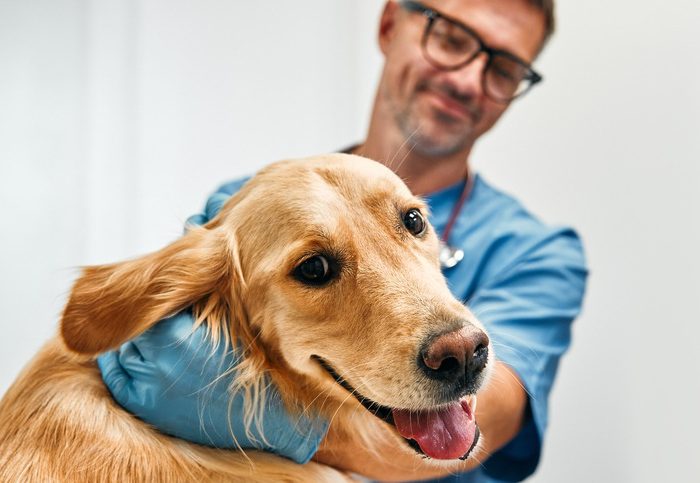As a pet owner, you want to provide the best care possible for your furry family member. One key aspect of pet healthcare is veterinary internal medicine, which plays a vital role in diagnosing and treating chronic illnesses. In this article, we’ll discuss the importance of veterinary internal medicine, common chronic illnesses in pets, diagnostic tools, comprehensive treatment plans, the long-term prognosis, and tips for managing chronic illnesses in pets.
What is Veterinary Internal Medicine?
Veterinary internal medicine is a specialization within veterinary medicine that focuses on diagnosing and treating non-surgical diseases in animals, particularly those affecting the internal organs. Board-certified veterinary internists undergo extensive training and pass rigorous exams to provide the highest level of expertise in their field. Their advanced knowledge helps them identify and address complex healthcare issues.
Veterinary Surgery
In some cases, pets with chronic illnesses may require surgical intervention. This is where a skilled veterinary surgeon comes into play. These professionals specialize in performing surgical procedures on animals to treat various conditions, working closely with the internal medicine team to ensure comprehensive care.
Common Chronic Illnesses in Pets
A range of chronic illnesses can affect pets, such as: – Chronic kidney disease – Diabetes Mellitus – Inflammatory bowel disease – Thyroid disorders – Cancer – Heart disease
Internal Medicine
Dog internal medicine plays a pivotal role in diagnosing and treating these conditions in our canine companions. Veterinary internists are well-equipped to address these complex cases, allowing your dog to receive the best care possible.
Diagnostic Tools and Techniques in Veterinary Internal Medicine
Veterinary internists utilize a range of diagnostic tools to determine the underlying causes of chronic illnesses in pets, including:
Physical Examination and Medical History
A thorough physical exam and medical history review are crucial first steps in the diagnostic process, as they help identify potential causes and guide further testing.
Laboratory Tests
Blood tests, urine analysis, and other laboratory tests are often necessary to detect specific abnormalities and diagnose chronic illnesses in pets.
Imaging Techniques
Advanced imaging techniques such as radiography (X-rays), ultrasound, CT scans, and MRI can provide valuable insights into the internal organs’ structure and function, aiding in diagnosis.
Endoscopy
Endoscopy, which involves using a flexible tube with a camera and light, can allow veterinarians to visualize the gastrointestinal tract and other internal structures, collect biopsies, and sometimes perform minimally invasive procedures.
Biopsies
Biopsies involve removing and examining tissue samples to definitively diagnose certain conditions, such as cancer or organ-specific diseases.
Comprehensive Treatment Plans for Chronic Illnesses
Once a diagnosis is made, veterinary internists develop tailored treatment plans to address the root cause of your pet’s chronic illness, which can include:
Symptom Management
Managing symptoms effectively can improve the quality of life for pets with chronic illnesses.
Medication Management
Proper administration of medications is crucial for treating chronic conditions and requires close monitoring and follow-up care.
Nutrition and Lifestyle Modifications
Diet and lifestyle changes can play an essential role in managing certain chronic illnesses, like diabetes and kidney disease.
Preventative Measures
In some cases, implementing preventive measures like regular check-ups and vaccinations can help minimize the risk of chronic illnesses in pets.
Veterinary Services
A well-equipped veterinary hospital should provide a range of veterinary services, including internal medicine, surgery, and preventive care, to ensure comprehensive and efficient care for pets with chronic illnesses.
The Role of Veterinary Internal Medicine in Long-term Prognosis and Follow-up Care
Ongoing monitoring and care are essential for pets with chronic illnesses. Regular follow-up appointments with veterinary internists enable them to assess the effectiveness of treatment plans, make any necessary adjustments, and monitor your pet’s overall health.
Collaborative Approach in Veterinary Internal Medicine
Veterinary internists often work closely with primary care veterinarians and other specialists (such as surgeons and oncologists) to ensure a collaborative and comprehensive approach to your pet’s healthcare.
Tips for Pet Owners in Managing Chronic Illnesses
As a pet owner, you play a crucial role in your pet’s well-being: – Be proactive in seeking veterinary care. – Prioritize regular check-ups. – Ensure proper nutrition and exercise. – Administer medications consistently. – Maintain open communication with veterinary professionals.
Conclusion
Veterinary internal medicine plays a vital role in diagnosing and treating chronic illnesses in pets, and it’s essential to seek specialized care for your pet to ensure optimal health and well-being. Remember, early detection, comprehensive treatment, and ongoing care make all the difference when managing chronic illnesses in pets.




